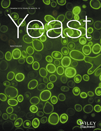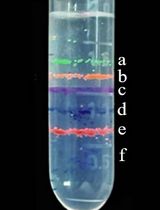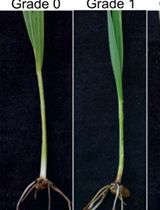- EN - English
- CN - 中文
A Protocol of Using White/Red Color Assay to Measure Amyloid-induced Oxidative Stress in Saccharomyces cerevisiae
测定酿酒酵母中淀粉样蛋白诱导氧化应激的白/红色实验方案
发布: 2017年08月05日第7卷第15期 DOI: 10.21769/BioProtoc.2440 浏览次数: 11837
评审: Yanjie LiSandeep DaveAnonymous reviewer(s)
Abstract
The yeast Saccharomyces cerevisiae (S. cerevisiae) harboring ade1 or ade2 mutations manifest red colony color phenotype on rich yeast medium YPD. In these mutants, intermediate metabolites of adenine biosynthesis pathway are accumulated. Accumulated intermediates, in the presence of reduced glutathione, are transported to the vacuoles, whereupon the development of the red color phenotype occurs. Here, we describe a method to score for presence of oxidative stress upon expression of amyloid-like proteins that would convert the red phenotype of ade1/ade2 mutant yeast to white. This assay could be a useful tool for screening for drugs with anti-amyloid aggregation or anti-oxidative stress potency.
Keywords: Amyloid (淀粉样蛋白)Background
The yeast Saccharomyces cerevisiae cells mutant for ADE1 or ADE2 genes (e.g., ade1∆, ade2∆, ade1-14, ade2-1), when grown on YPD (Yeast Peptone Dextrose) medium, accumulate red pigment in the vacuole which is an intermediate metabolite of adenine biosynthesis pathway (Sharma et al., 2003). The suppressible allele ade1-14 which contains a premature stop codon, has been widely used to score for [PSI+] prion state of the translation termination factor Sup35 protein. In a [psi-] yeast, the Sup35p remains soluble and functional, therefore translation is terminated efficiently at the premature stop codon of the ade1-14 allele leading to synthesis of truncated and non-functional Ade1 protein. Thus, the adenine biosynthesis cascade remains incomplete leading to accumulation of intermediate metabolite yielding the red phenotype of the [psi-] yeast. In contrast, in a [PSI+] yeast, the Sup35p is aggregated and partially inactivated, thereby causing read-through of the premature non-sense codon of the ade1-14 allele that leads to functional Ade1 protein synthesis. Thus, adenine biosynthesis pathway is completed and no red intermediate metabolite is accumulated, consequently giving the [PSI+] cells, a white phenotype (Chernoff et al., 1993). In the view that the red color development from this adenine biosynthesis intermediate metabolite requires presence of reduced glutathione(Sharma et al., 2003), we reasoned that presence of oxidative stress which would oxidize glutathione, would also cause white color conversion alike to the white phenotype of the [PSI+] yeast. Additionally, it is known that the aggregations of several amyloid proteins cause cellular oxidative stress, therefore we attempted to develop a red/white reporter color assay for amyloid-induced oxidative stress in the ade1/ade2 mutant yeast background similar to the widely used red/white assay for the [psi-] to [PSI+] conversion (Bharathi et al., 2016). We present here red/white color switch assay using two amyloid-like proteins, TAR DNA binding protein 43 (TDP-43) and Fused in Sarcoma (FUS), both of which are implicated in the pathogenesis of the motor neuron disease, Amyotrophic Lateral Sclerosis (ALS) (Rossi et al., 2016). Such simplistic color assay for amyloid-induced oxidative stress in yeast has never been reported previous to our Bharathi et al., 2016 manuscript and has the potential to be a highly useful methodology to study for amyloid protein-induced toxicity in yeast.
Materials and Reagents
- Pipette tips (Tarsons products pvt ltd., India)
- Microcentrifuge tubes (Tarsons products pvt ltd., India)
- Petri dishes (Genaxy scientific pvt ltd., India)
- Sterile toothpick
- Yeast Saccharomyces cerevisiae strain: 74D-694 (MATa ade1-14, his3-200, ura3-52, leu2-3, 112, trp1-289, [psi-])
Note: This assay can also be performed using an ade2-1 allele bearing mutant yeast or an ade2∆ mutant yeast as well as using an ade1∆ mutant yeast. - Plasmids
- pRS416-GAL1p-FUS-YFP (URA3) (Addgene, catalog number: 29593 )
- pRS416-GAL1p-TDP43-YFP (URA3) (Addgene, catalog number: 27447 )
- pRS416 (URA3)
- pAG416 GAL1p-ccdB-EGFP (URA3) (Addgene, catalog number: 14195 )
- 0.1 M phosphate buffer (pH 7.4)
- 2’,7’-Dichlorofluoroscein diacetate [DCFDA] (Sigma-Aldrich, catalog number: D6883 )
- Lithium acetate (Sigma-Aldrich, catalog number: 517992 )
- Peptone (HiMedia Laboratories, catalog number: RM001 )
- D-glucose [Dextrose] (AMRESCO, catalog number: 0188 )
- Yeast extract (HiMedia Laboratories, catalog number: RM027 )
- Bacteriological agar (HiMedia Laboratories, catalog number: RM026 )
- D-raffinose (Sigma-Aldrich, catalog number: 83400 )
- D-galactose (Sigma-Aldrich, catalog number: 48260 )
- Yeast nitrogen base (HiMedia Laboratories, catalog number: G090 )
- Sodium dodecyl sulphate [SDS] (Sigma-Aldrich, catalog number: L3771 )
- Chloroform (Sigma-Aldrich, catalog number: 372978 )
- Ammonium sulfate (Sigma-Aldrich, catalog number: A2939 )
- Amino acids: Arginine, Histidine, Isoleucine, Valine, Lysine, Methionine, Adenine, Phenylalanine, and Tyrosine (HiMedia Laboratories, India); Leucine and Tryptophan (Sigma-Aldrich, USA)
- YPD medium (see Recipes)
- SRaf-Ura + 0.1% gal + ¼ YP plate (see Recipes)
- SRaf-Ura broth (see Recipes)
- SD-Ura + ¼ YP plate (see Recipes)
- SD-Ura + ⅓ YP plate (see Recipes)
- DCF extraction buffer (see Recipes)
Equipment
- Pipettes (Corning, USA)
- 250 ml conical flasks (Borosil Glass Works ltd., India)
- Microcentrifuge (Thermo Fisher Scientific, Thermo ScientificTM, model: MicroCL 21R )
- Fluorescence microscope (Leica Microsystems, model: Leica DM2500 )
- Laminar flow biosafety cabinet (Esco Micro, model: ACB-4A1 )
- Temperature controlled incubator (JS Research, model: JSGI-100T )
- Temperature controlled orbital shaker (Eppendorf, New BrunswickTM, model: Excella® E24 )
- UV-Vis spectrophotometer (Hitachi High-Technologies, model: U-3900 )
- Vortex mixer (Remi, model: CM-101 )
- Autoclave sterilizer (JS Research, model: JSAC-100 )
- Multimode microplate reader (Molecular Devices, model: Spectramax M5e )
- Camera
Software
- GraphPad QuickCalcs software (from GraphPad Software Inc., USA)
https://www.graphpad.com/quickcalcs/ttest1.cfm
Procedure
文章信息
版权信息
© 2017 The Authors; exclusive licensee Bio-protocol LLC.
如何引用
Bharathi, V., Girdhar, A. and Patel, B. K. (2017). A Protocol of Using White/Red Color Assay to Measure Amyloid-induced Oxidative Stress in Saccharomyces cerevisiae. Bio-protocol 7(15): e2440. DOI: 10.21769/BioProtoc.2440.
分类
微生物学 > 微生物新陈代谢 > 其它化合物
微生物学 > 体内实验模型 > 真菌
细胞生物学 > 基于细胞的分析方法 > 胞外微环境
您对这篇实验方法有问题吗?
在此处发布您的问题,我们将邀请本文作者来回答。同时,我们会将您的问题发布到Bio-protocol Exchange,以便寻求社区成员的帮助。
提问指南
+ 问题描述
写下详细的问题描述,包括所有有助于他人回答您问题的信息(例如实验过程、条件和相关图像等)。
Share
Bluesky
X
Copy link












